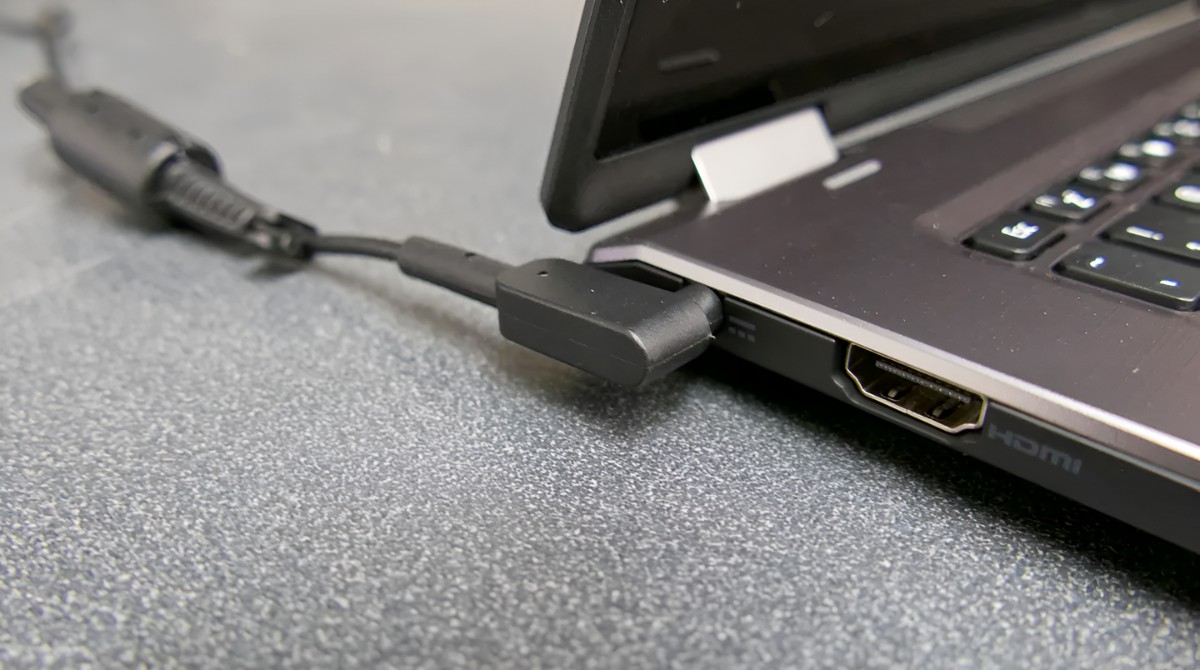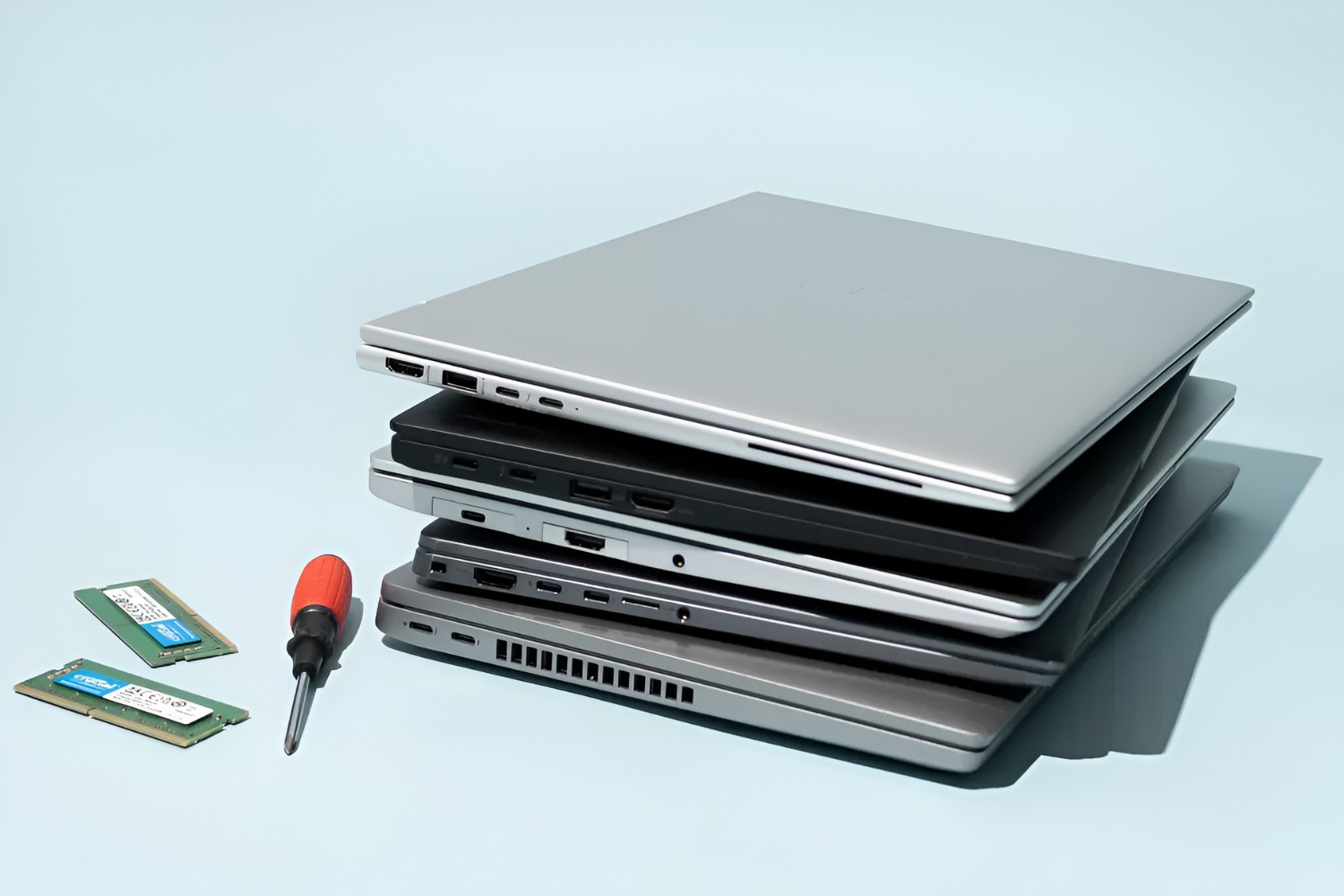Introduction
Welcome to our guide on how to restore your ASUS Ultrabook to factory settings. Over time, your Ultrabook may become cluttered with unnecessary files and software, causing it to slow down or even malfunction. Restoring it to its original factory settings can help resolve these issues and bring back its optimal performance.
Before proceeding with the restoration process, it’s important to note that all data and settings on your Ultrabook will be erased. Therefore, it’s crucial to back up any important files or documents that you want to keep before beginning the restoration.
Restoring your ASUS Ultrabook to factory settings can be done through the recovery partition, a hidden section of your computer’s hard drive that contains the original system image. By accessing this recovery partition, you can effectively revert your Ultrabook to the state it was in when you first purchased it.
In this guide, we will walk you through the step-by-step process of restoring your ASUS Ultrabook to factory settings. By following these instructions, you’ll be able to remove any unnecessary files, software, or settings that may be causing performance issues and start with a clean slate.
It’s important to note that the exact steps and options may vary slightly depending on the model and version of your ASUS Ultrabook. However, the general process outlined in this guide should apply to most ASUS Ultrabooks.
Now, let’s begin the journey of restoring your ASUS Ultrabook to its factory settings and giving it a fresh start.
Step 1: Back Up Your Important Files
Before you embark on restoring your ASUS Ultrabook to factory settings, it is crucial to back up any important files or documents that you don’t want to lose. This way, you can ensure that your valuable data remains safe and accessible even after the restoration process.
There are several ways to back up your files, depending on your preference and the amount of data you need to save. Here are a few options:
- External Hard Drive or USB Drive: Connect an external hard drive or USB drive to your Ultrabook and manually copy your important files and folders to the device. Make sure you have enough storage space to accommodate all the data you want to back up.
- Cloud Storage: Use cloud storage services such as Google Drive, Dropbox, or Microsoft OneDrive to upload your files and access them from anywhere with an internet connection. This method provides an additional layer of security since your files will be stored off-site.
- Network Attached Storage (NAS): If you have a NAS device set up on your home network, you can back up your files directly to it. This option allows for easy access to your files within your local network.
Regardless of the method you choose, it’s essential to ensure that your backups are complete and up-to-date. Double-check that you have copied all the necessary files, including documents, photos, videos, and any other data you want to preserve.
Take your time to organize your files and create a backup strategy that works best for you. It’s a good idea to create separate folders for different file types or projects to make retrieval easier in the future.
Once you have successfully backed up all your important files, you can move on to the next step, which will guide you through the process of restoring your ASUS Ultrabook to factory settings and starting with a fresh installation of the operating system.
Step 2: Restart Your ASUS Ultrabook
Now that you have safely backed up your important files, it’s time to restart your ASUS Ultrabook and begin the restoration process. Follow these steps to restart your Ultrabook:
- Save any open files and close all applications that are currently running on your Ultrabook.
- Click on the “Start” menu (Windows logo) in the lower-left corner of your screen or press the “Windows” key on your keyboard.
- Click on the power icon, usually located in the lower right-hand corner of the Start menu.
- Select the “Restart” option from the power menu, and your Ultrabook will begin the restart process.
It’s important to perform a restart before initiating the restoration process to ensure that your Ultrabook is running smoothly and is prepared for the next steps.
During the restart process, your Ultrabook will shut down and then power back on. Once it has successfully restarted, it will be ready for the next phase of the restoration process.
Note that restarting your Ultrabook will not initiate the actual factory reset. It is simply a necessary step to ensure that the system is in an optimal state before proceeding.
Now that you have successfully restarted your ASUS Ultrabook, let’s move on to the next step, where we will access the recovery partition to initiate the restoration process.
Step 3: Access the Recovery Partition
Accessing the recovery partition on your ASUS Ultrabook is essential to initiate the factory restore process. The recovery partition is a hidden section of your computer’s hard drive that contains the original system image needed for the restoration.
Follow these steps to access the recovery partition:
- Restart your ASUS Ultrabook if it is not already powered on.
- During the startup process, continuously press the appropriate key to enter the BIOS or boot settings menu. This key varies depending on your Ultrabook model but is commonly one of the following: F2, F9, F10, or Del.
- Once inside the BIOS or boot settings menu, navigate to the “Boot” or “Boot Options” tab using the arrow keys on your keyboard.
- Select the recovery partition from the list of available boot devices. It may be labeled as “Recovery,” “Restore,” or something similar.
- Save your changes and exit the BIOS or boot settings menu. Typically, you can do this by pressing the F10 key or selecting the “Save and Exit” option.
After following these steps, your ASUS Ultrabook will restart and proceed to boot from the recovery partition. This will bring you to the recovery environment, where you can begin the factory restore process.
If for some reason you are unable to access the recovery partition using the aforementioned method, you may need to consult your Ultrabook’s user manual or visit the ASUS support website for specific instructions on accessing the recovery environment for your particular model.
Now that you have successfully accessed the recovery partition, it’s time to move on to the next step, where we will choose the reset option and initiate the factory restore on your ASUS Ultrabook.
Step 4: Choose the Reset Option
Once you have successfully accessed the recovery partition on your ASUS Ultrabook, it’s time to choose the reset option to initiate the factory restore process. Follow these steps to select the reset option:
- In the recovery environment, you will be presented with a list of available options. Look for the option that mentions resetting your Ultrabook to its factory settings or resetting the operating system.
- Click on or select this reset option to proceed with the factory restore process. Make sure to carefully read and understand any warnings or additional information that is provided.
- In some cases, you may be prompted to choose between a “Keep my files” option and a “Remove everything” option. If you want to completely erase all data and settings on your Ultrabook, select the “Remove everything” option. Keep in mind that this will permanently delete all personal files, so be absolutely certain before proceeding.
- Confirm your selection and proceed to the next step. Depending on your Ultrabook model, you may need to follow additional on-screen instructions or provide further confirmation before the reset process begins.
Choosing the reset option will initiate the factory restore process, which may take some time to complete. Ensure that your Ultrabook is connected to a power source throughout the process to prevent any interruptions or loss of power.
Remember that all existing data, files, and settings on your Ultrabook will be permanently erased during this process. If there are any important files or documents that you haven’t backed up, make sure to do so before proceeding.
Now that you have selected the reset option, let’s move on to the next step, where we will begin the actual restoration process and wait for it to complete.
Step 5: Begin the Reset Process
After choosing the reset option, you are ready to begin the actual restoration process on your ASUS Ultrabook. Follow these steps to start the reset process:
- Once you have confirmed your selection and any additional prompts, the factory restore process will begin. Your Ultrabook will start to format the hard drive and reinstall the original operating system.
- During this process, it’s important to be patient and avoid interrupting the restoration. The duration of the reset process can vary depending on the model of your Ultrabook as well as the specifications of your system.
- Your Ultrabook may restart multiple times during the reset process. This is normal, so do not be alarmed. Allow the system to complete each restart and continue with the restoration.
- Ensure that your Ultrabook remains connected to a power source throughout the duration of the reset process. Losing power during the restoration can cause errors and potentially damage your Ultrabook.
It’s important to note that once the reset process is initiated, there is no turning back. All data, files, and settings on your Ultrabook will be permanently erased. Therefore, it is essential to have a backup of any important files to avoid losing them.
The reset process will restore your ASUS Ultrabook to its original factory settings, removing any installed software, personal files, and custom settings. Upon completion, your Ultrabook will be in the same state as when you first purchased it.
Now that you have begun the reset process on your ASUS Ultrabook, it’s time to move on to the next step and wait for the restoration to complete, so you can set up your Ultrabook again.
Step 6: Wait for the Reset to Complete
After starting the reset process on your ASUS Ultrabook, it’s important to be patient and allow the restoration to complete. The duration of the reset process can vary depending on the model and specifications of your Ultrabook.
During the reset, your Ultrabook will go through several stages, including formatting the hard drive, reinstalling the operating system, and configuring the necessary drivers and software. It’s normal for the reset process to take some time to complete, so avoid interrupting or powering off your Ultrabook while it’s in progress.
While waiting for the reset to complete, you may see progress indicators on your screen or receive notifications about the status of the restoration process. These indicators will vary depending on your Ultrabook model and the operating system version.
Keep in mind the following tips while waiting for the reset to finish:
- Ensure that your Ultrabook remains connected to a power source throughout the entire reset process. Interruptions in power can cause errors or prevent the reset from completing successfully.
- Avoid using your Ultrabook for other tasks or running additional programs during the reset. This can slow down the restoration process and may cause complications.
- Stay vigilant for any on-screen prompts or instructions that may require your attention during the reset. Follow these instructions carefully to ensure a smooth and successful restoration.
Once the reset process is complete, your ASUS Ultrabook will reboot and present you with the initial setup screens. At this point, you can proceed with setting up your Ultrabook again, customizing the settings, and reinstalling any necessary software or applications.
Now, all that’s left is to wait for the restoration process to finish, so you can move on to the final step and set up your ASUS Ultrabook once again.
Step 7: Set Up Your ASUS Ultrabook Again
After the reset process is complete, your ASUS Ultrabook will reboot and present you with the initial setup screens. Follow these steps to set up your Ultrabook again:
- Select your preferred language, keyboard layout, and other regional settings as prompted.
- Read and accept the End User License Agreement (EULA) and any other agreements presented during the setup process.
- Provide your username and password to set up a new user account. You may also have the option to sign in with your existing Microsoft account if desired.
- Customize the settings on your Ultrabook according to your preferences. This includes options such as privacy settings, screen resolution, and automatic updates.
- Reinstall any necessary software, applications, or drivers that you need for your Ultrabook. Make sure to download them from reliable sources and follow the installation instructions carefully.
- Restore your backed-up files from the external storage device, cloud storage, or any other backup method you used before starting the factory restore process. This will help bring back your personal files and data to your Ultrabook.
- Take the time to configure your Ultrabook to suit your needs and preferences. This may include setting up your email accounts, organizing your desktop, and personalizing your desktop background, among other things.
Once you’ve completed the setup process and are satisfied with your settings and configurations, your ASUS Ultrabook is ready to be used again. Enjoy the fresh start and improved performance that comes with restoring it to its factory settings.
Remember to regularly back up your files and keep your Ultrabook optimized by removing unnecessary files, updating software and drivers, and practicing good digital hygiene.
Congratulations! You have successfully set up your ASUS Ultrabook again. Take some time to explore its features and start using it for your everyday tasks and activities.
Conclusion
Restoring your ASUS Ultrabook to factory settings can be a beneficial solution when you are facing performance issues or want to start fresh. By following the step-by-step process outlined in this guide, you can successfully bring your Ultrabook back to its original state and enjoy a smoother and more efficient computing experience.
Remember, before you begin the restoration process, it’s crucial to back up your important files to prevent any data loss. Take the time to choose the backup method that works best for you, whether it’s using an external hard drive, cloud storage, or a network-attached storage (NAS) device.
Throughout the restoration process, it’s important to be patient and allow the procedures to complete without interruption. Your Ultrabook may restart multiple times, format the hard drive, and reinstall the operating system. It’s essential to keep your Ultrabook connected to a power source to avoid any disruptions during the reset process.
Once the restoration is complete, you will need to set up your ASUS Ultrabook again. This involves configuring settings, reinstalling necessary software, and restoring your backed-up files. Take this opportunity to personalize your Ultrabook and optimize it for your specific needs and preferences.
By regularly backing up your files, performing routine maintenance, and practicing good digital habits, you can help prolong the performance and lifespan of your ASUS Ultrabook.
Remember, the exact steps and options may vary slightly depending on your Ultrabook model and version. For specific instructions or further assistance, it is recommended to consult your Ultrabook’s user manual or visit the ASUS support website for more information.
We hope this guide has been helpful in guiding you through the process of restoring your ASUS Ultrabook to factory settings. Enjoy your refreshed Ultrabook and get ready to experience its optimal performance once again!

























